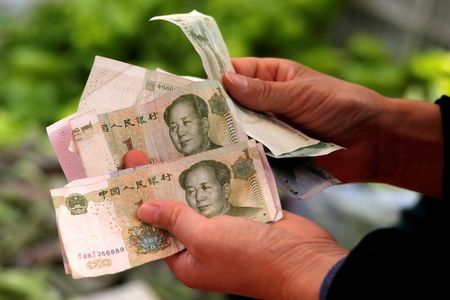
Investing.com – Most Asian currencies weakened at the start of the week, pressured by a rebound in the U.S. dollar amid uncertainty surrounding President Donald Trump’s tariff policies, while weak Chinese factory data further dampened market sentiment.
Trump imposed a 25% tariff on Colombian imports overnight after Colombia’s President Gustavo Petro blocked U.S. deportation flights.
Following Petro’s proposal to use Colombia’s presidential aircraft and accept deportees, Trump put a hold on the tariffs, marking an intermediate resolution to the diplomatic standoff.
The US Dollar Index rose 0.3% in Asian trading on Monday, after recording its worst weekly fall in two months. US Dollar Index Futures were also 0.3% higher.
Chinese factory activity data disappoints
The Chinese yuan’s onshore pair USD/CNY rose 0.3%, while the offshore pair USD/CNH was 0.4% higher.
China’s manufacturing activity unexpectedly contracted in January, data showed on Monday, as recent stimulus measures from Beijing provided only brief support to local businesses.
Meanwhile, growth in the non-manufacturing sector also slowed significantly during the month, with local businesses facing uncertainty due to the potential for higher U.S. trade tariffs.
Other regional currencies also fell as investors were still unclear about Trump’s policies after recent developments around tariffs in Colombia.
The Australian dollar’s AUD/USD pair inched 0.2% lower.
The Japanese yen’s USD/JPY pair edged 0.2% higher, after the Bank of Japan raised interest rates as expected last week.
The Indonesian rupiah’s USD/IDR pair gained 0.2%, while the Singapore dollar’s USD/SGD pair edged 0.2% higher.
The Indian rupee’s USD/INR pair inched 0.1% higher, while the Thai baht’s USD/THB pair climbed 0.5%.
The South Korean won’s USD/KRW pair rose 0.4%, a day after the country’s prosecutors indicted the impeached President Yoon Suk Yeol on charges of leading an insurrection with his attempt to impose martial law on Dec. 3.
Data barrage this week- US rate decision; CPI from Australia, Tokyo
Investors are awaiting the Federal Reserve’s upcoming policy meeting due later in the week, where the central bank is expected to hold rates steady.
Fed’s preferred gauge of inflation – PCE price index data, and advance GDP estimates for the fourth quarter are also due this week.
In Australia, the release of monthly and quarterly CPI data is due on Wednesday and will influence expectations for the Reserve Bank of Australia’s policy decisions.
Inflation data from Japan’s capital city Tokyo will also be in focus this week.
This post is originally published on INVESTING.



